78 Apocrita I
Apocrita
The remainder of the groups in Hymenoptera are in the suborder Apocrita. There is an enormous size range in this suborder, from completely microscopic to large and noticeable. the majority of groups in the Apocrita are predators or parasitoids, but there are some species that are highly coevolved with plants. There is also an incredible diversity of reproductive strategies in this group, including parasitoids, hyperparasitoids, inquilines, and various degrees of sociality.
The first abdominal segment of all Apocrita, called the propodeum, is fused with the thorax. This fused segment is separated from the rest of the abdomen by a narrow abdominal segment that forms the petiole. In some groups, the ovipositor is also modified into a stinger, complete with venom sacs and complex musculature, to defend the individual and/or its colony.
There are a number of superfamilies and, for some groups, I will recommend that you only learn the superfamilies. Taxonomy is very dynamic in the Apocrita, and even some families are difficult to identify with any certainty.
Braconidae
Braconidae is a family of parasitoid wasps, called braconid wasps. Wasps in the superfamily Ichneumonoidea (Braconidae + Ichneumonidae) are distinguished from other Hymenoptera by having two-segmented hind trochanters and antennae with >15 segments. Braconidae tend to be smaller than the next family, Ichneumonidae, but there are some exceptions. The best way to tell the two families apart is by using wing venation. Braconidae have a single m-cu crossvein in the forewing, while Ichneumonidae have two m-cu crossveins.
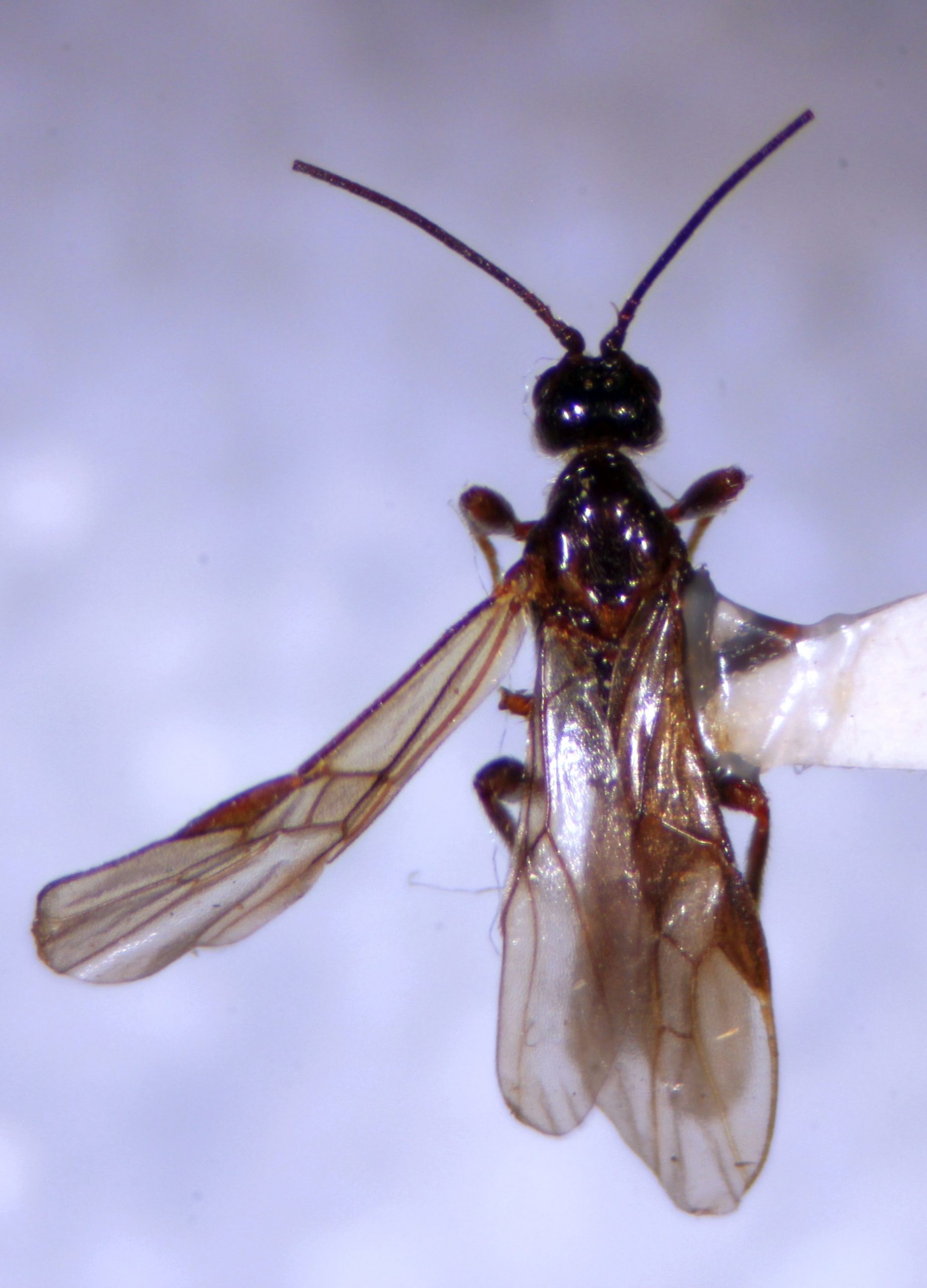
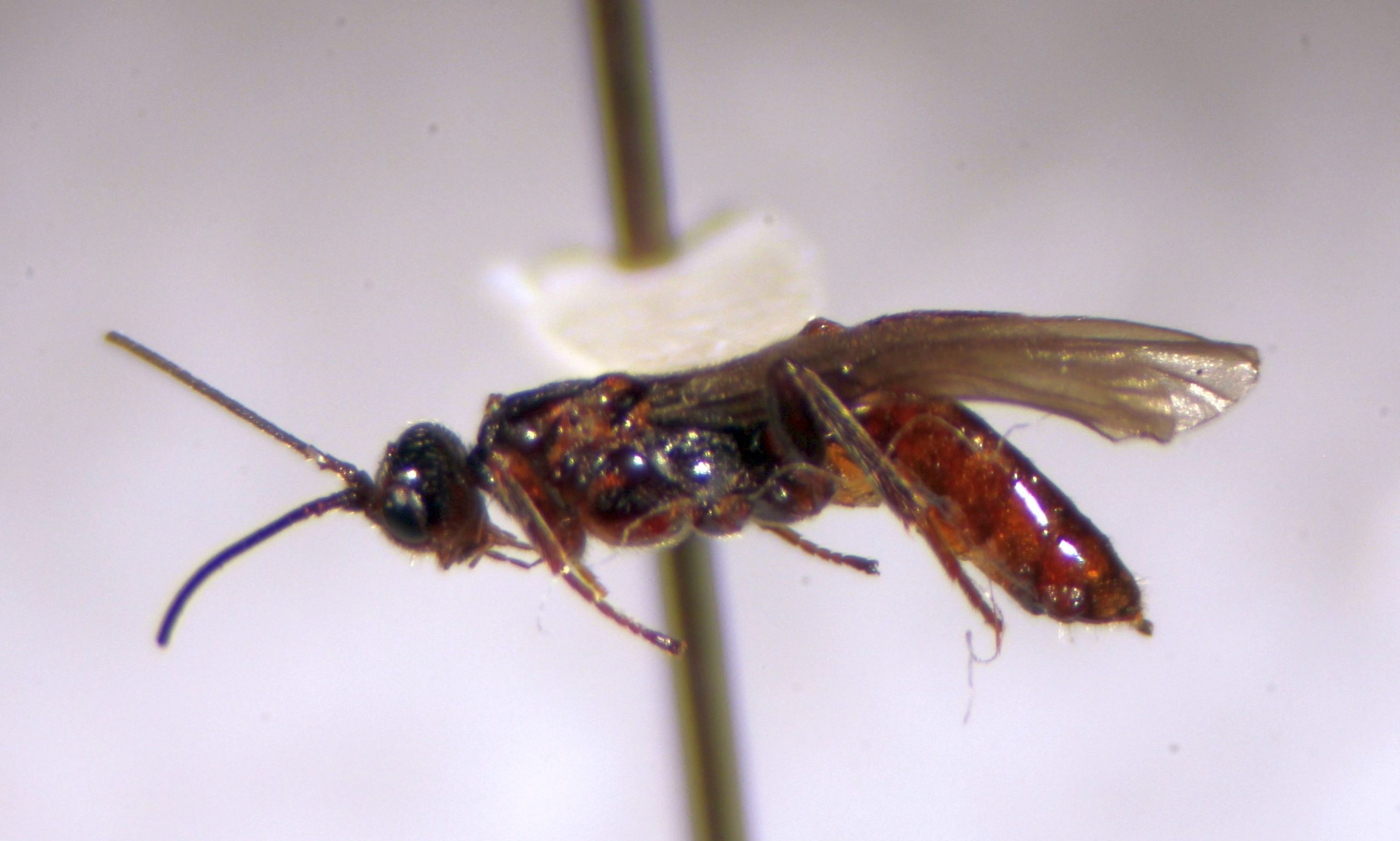
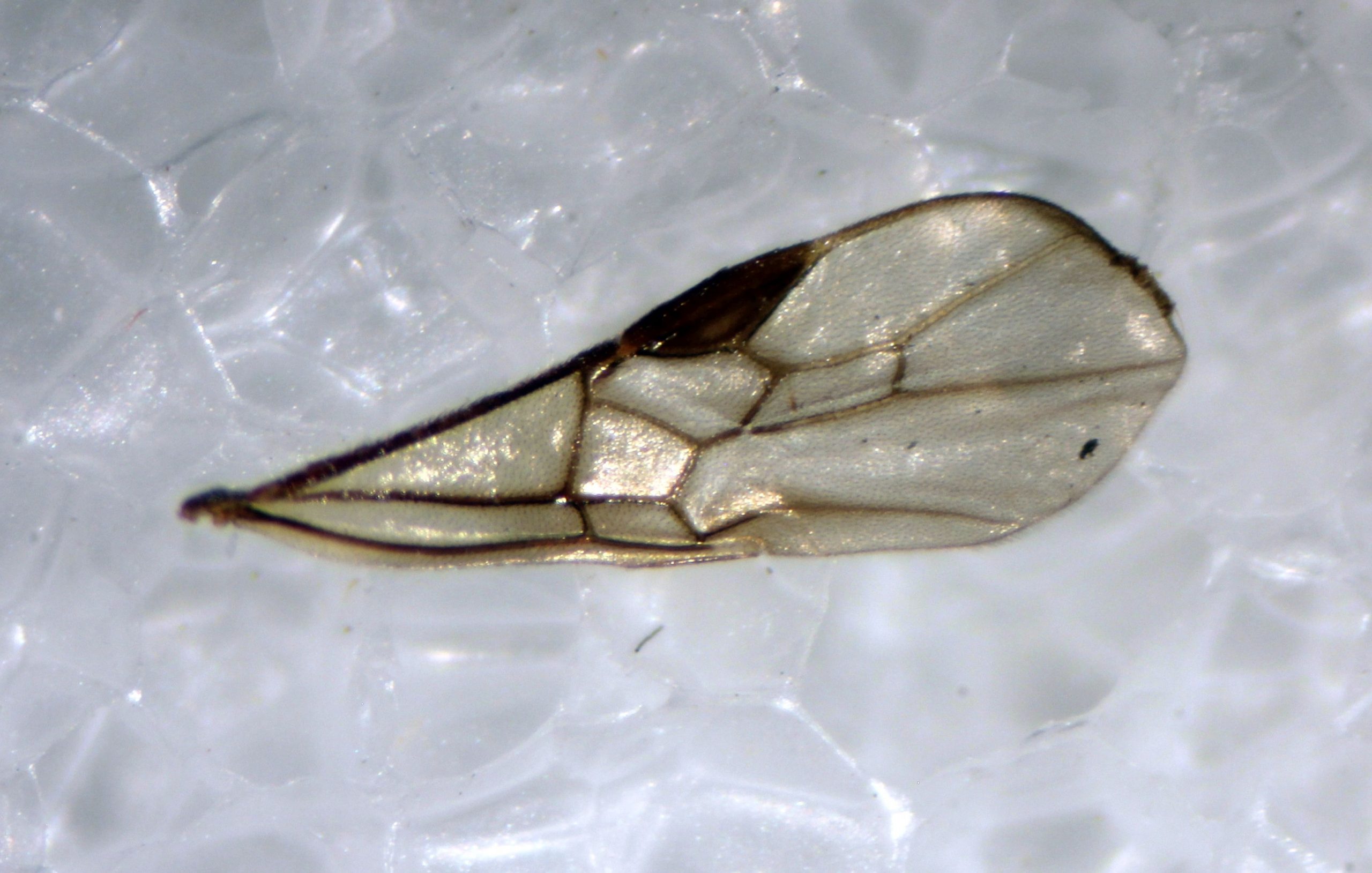
Ichneumonidae
Ichneumonidae is the second family in the superorder Ichneumonoidea, and are called ichneumon wasps. As you might expect, they tend to be quite similar to Braconidae, with two-segmented hind trochanters and antennae with >15 segments. Ichneumonidae are generally larger then Braconidae, but there are some exceptions. Again, the best way to tell the two families apart is by using wing venation. Ichneumonidae have two m-cu crossveins in the forewing, while Braconidae have a single m-cu crossvein. A shortcut, which is not 100% effective: look for the outline of a horse’s head (a wing cell outlined by veins that includes a right-angle bend) in the venation pattern of the forewing. Almost all Ichneumonidae show this pattern. If the shape is lacking, or if the “horse is wearing a halter” (as in the wing pattern shown under Braconidae, where that same area of wing is divided into three cells by veins), check other characteristics to determine the family.
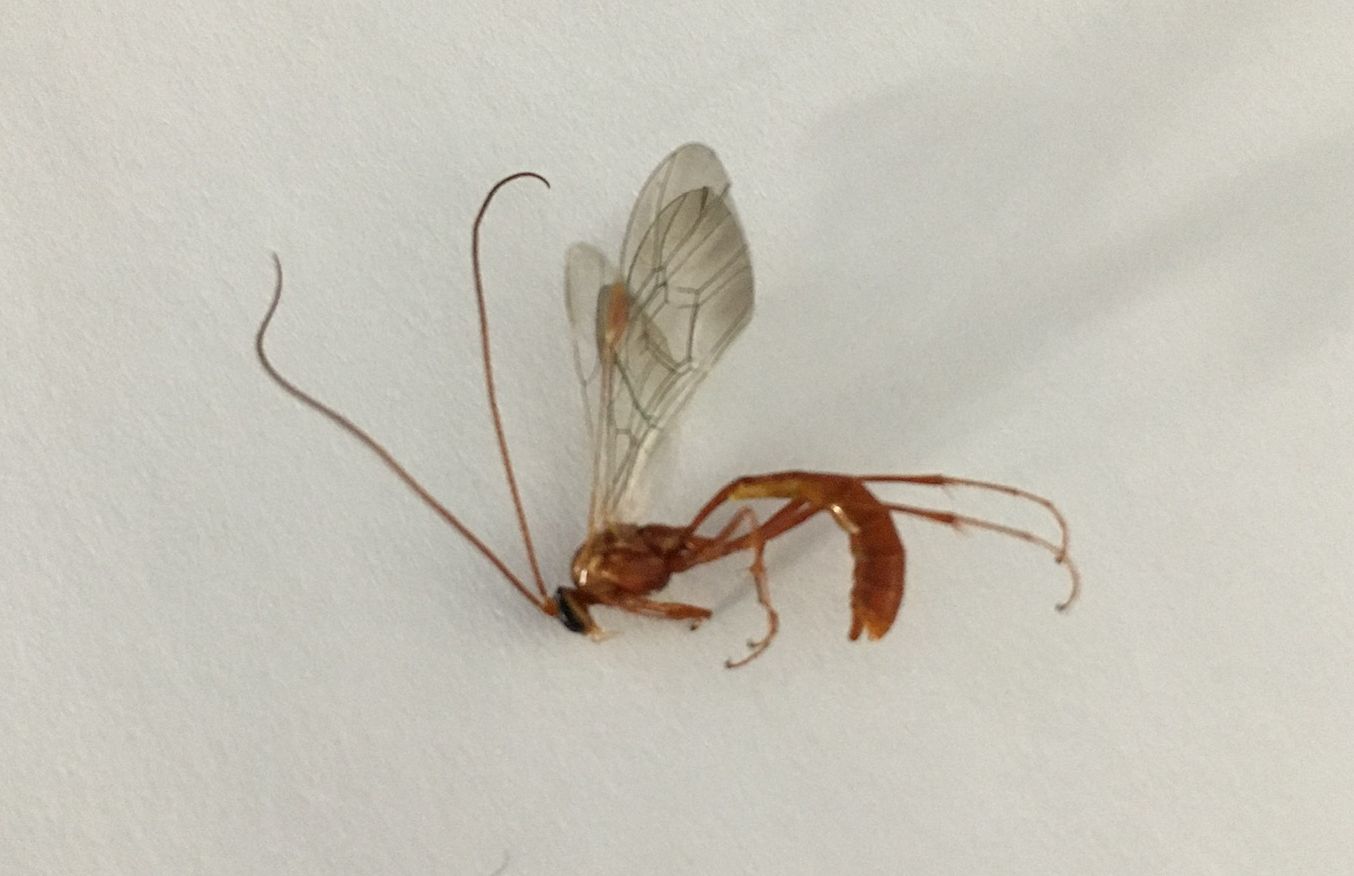

Superfamily Chalcidoidea
I am only asking you to be able to identify this group to superfamily. The superfamily Chalcidoidea (pronunciation = “Kal-sid-oy-dee-ah”) includes some fascinating groups with diverse life cycles. However, almost all insects in this superfamily are very small and specialized, so you may not have any of this group in your collections. They also take some work to identify!
Many Chalcidoidea are parasitoids of other insects, hyperparasitoids of other parasitoids, or seed predators. Trichogrammatidae includes some very tiny wasps that oviposit inside other insects’ eggs. Their larvae mature by feeding on that single egg, making them important biological control agents. There are several families that either cause galls (swellings) on plants, or that live inside galls caused by other insects as inquilines. Eurytomidae, Torymidae, and Chalcididae are some of these. Another important family in the Chalcidoidea is the Agaonidae, or fig wasps. They have a complex, coevolved relationship with fig trees. For more details, I encourage you to set aside time to watch PBS’s “Queen of Trees”, https://naturedocumentaries.org/2929/queen-trees-pbs-2006/.
The adult pictured here is Megastigmus spermotrophus, the Douglas-fir seed chalcid, a typical seed predator. Because each larva lives and grows inside a single seed, the only way of assessing damage prior to planting the seed is by X-raying the seeds.
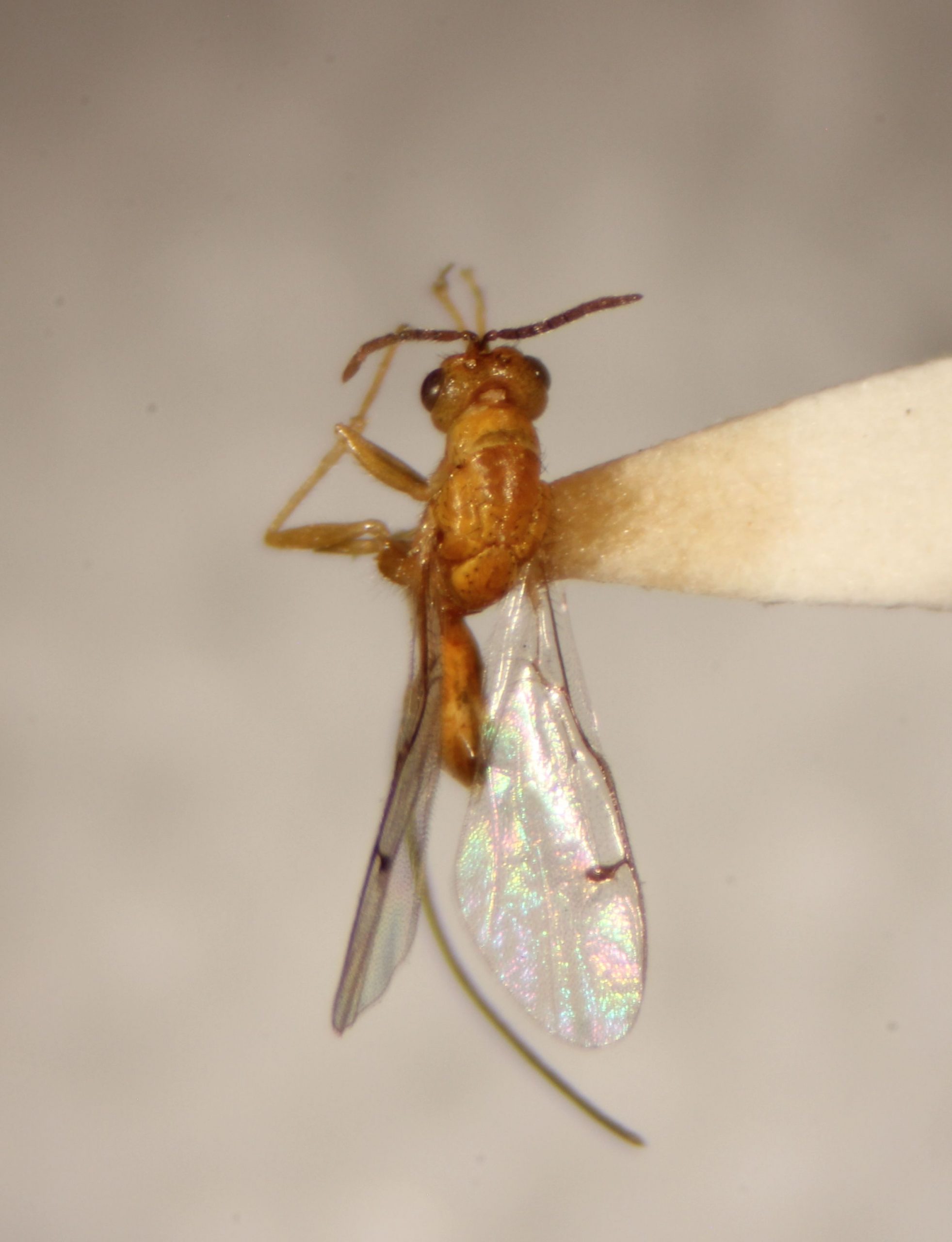
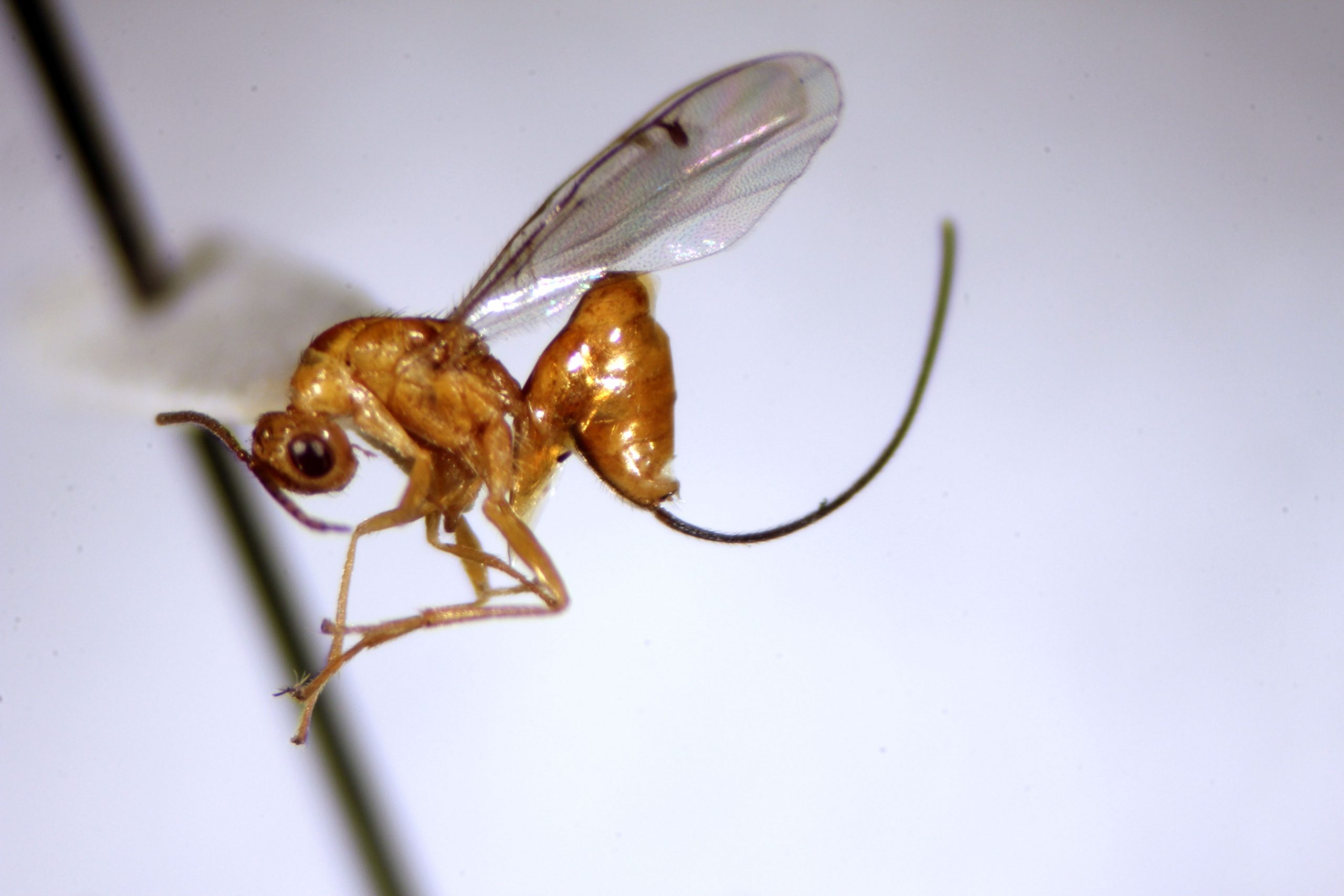
Chrysididae
Chrysididae, the cuckoo wasps or emerald wasps, are in the superfamily Chrysidoidea. They are both metallic and punctate, and have a very hard exoskeleton. They are fairly small insects, so are rarely noticed. When seen up close, they are dramatic and beautiful. Many are also capable of folding or rolling up in a ball in self-defense, and you may see some of that flexibility retained in preserved specimens. The ventral surface of the abdomen may even be somewhat concave, providing a place to lock in the head and thorax. They are mostly ectoparasitic on bee or wasp larvae, or kleptoparasites in nests of other Hymenoptera.

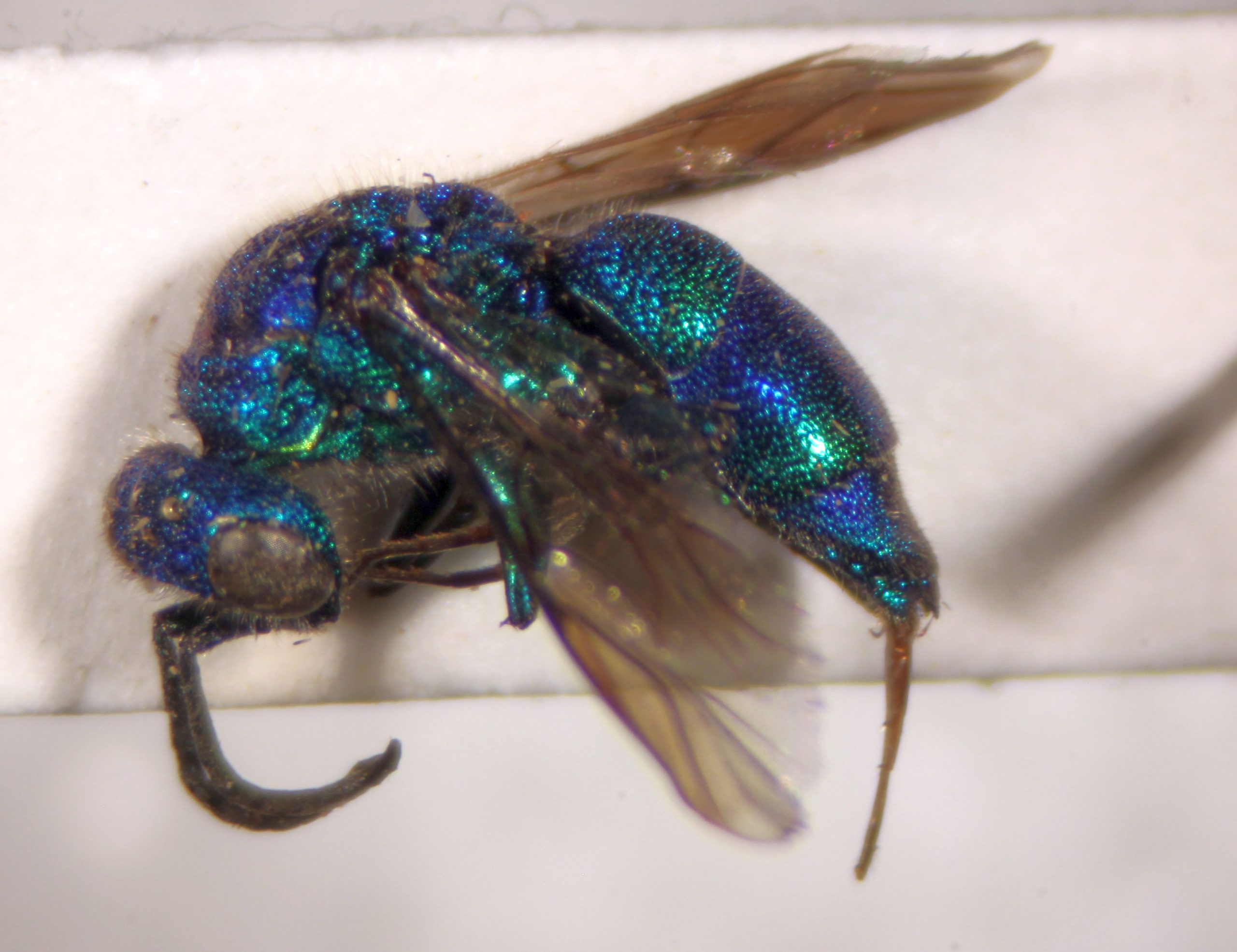
Sphecidae
Sphecidae are the thread-waisted wasps or mud daubers. Most members of this family specialize on a particular prey type. Cicadas, crickets, caterpillars, spiders, and flies are all among the prey types used by these wasps. Generally, the prey is captured, paralyzed with venom, then deposited in a burrow. Eggs are then laid on the still-living prey; when the larvae hatch, they have a ready source of fresh food. A few species are kleptoparasitic, laying their eggs on the paralyzed prey of another wasp.
The petiole of adults is exceptionally long, giving the wasps the common name of thread-waisted wasps.
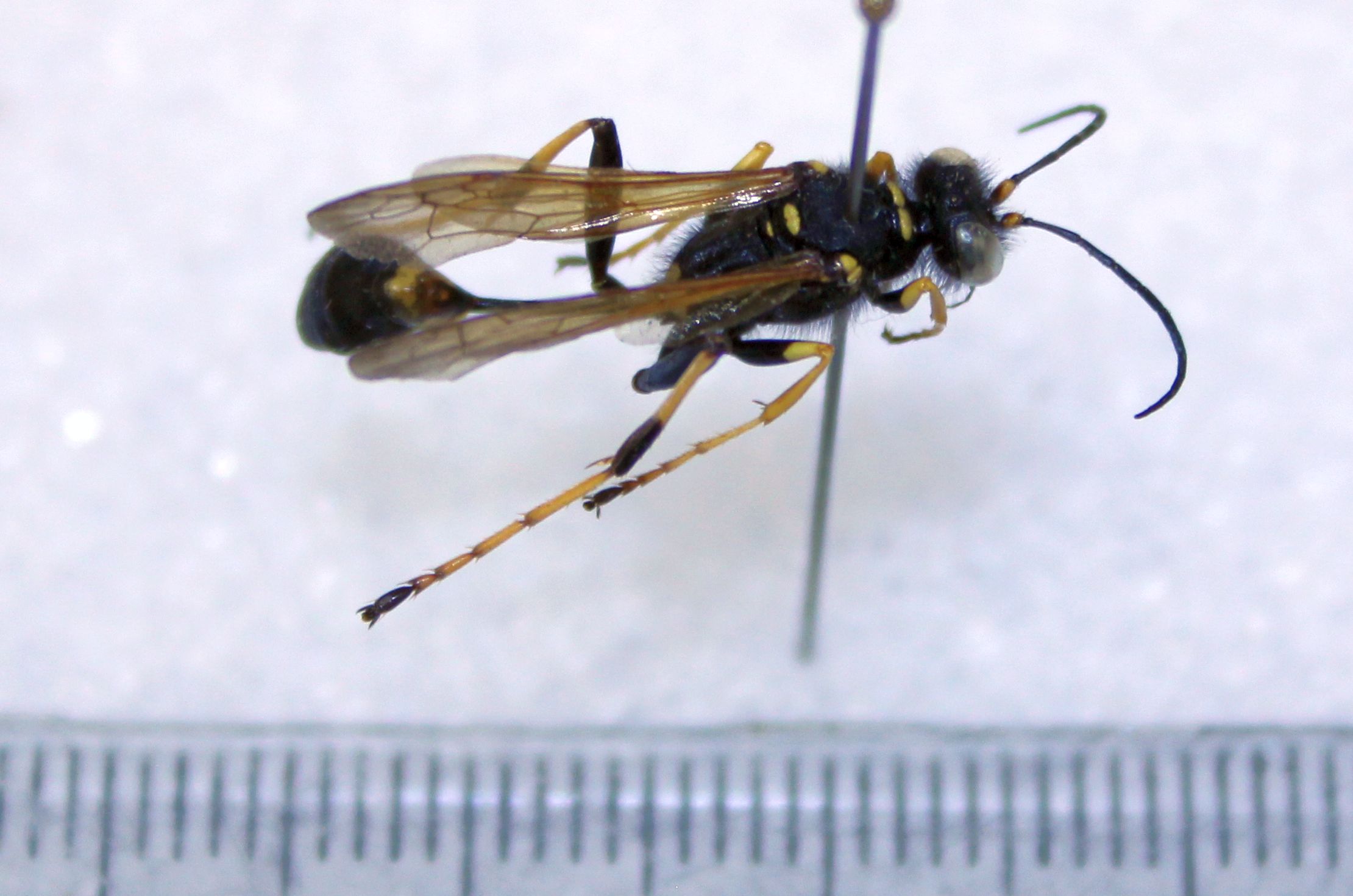
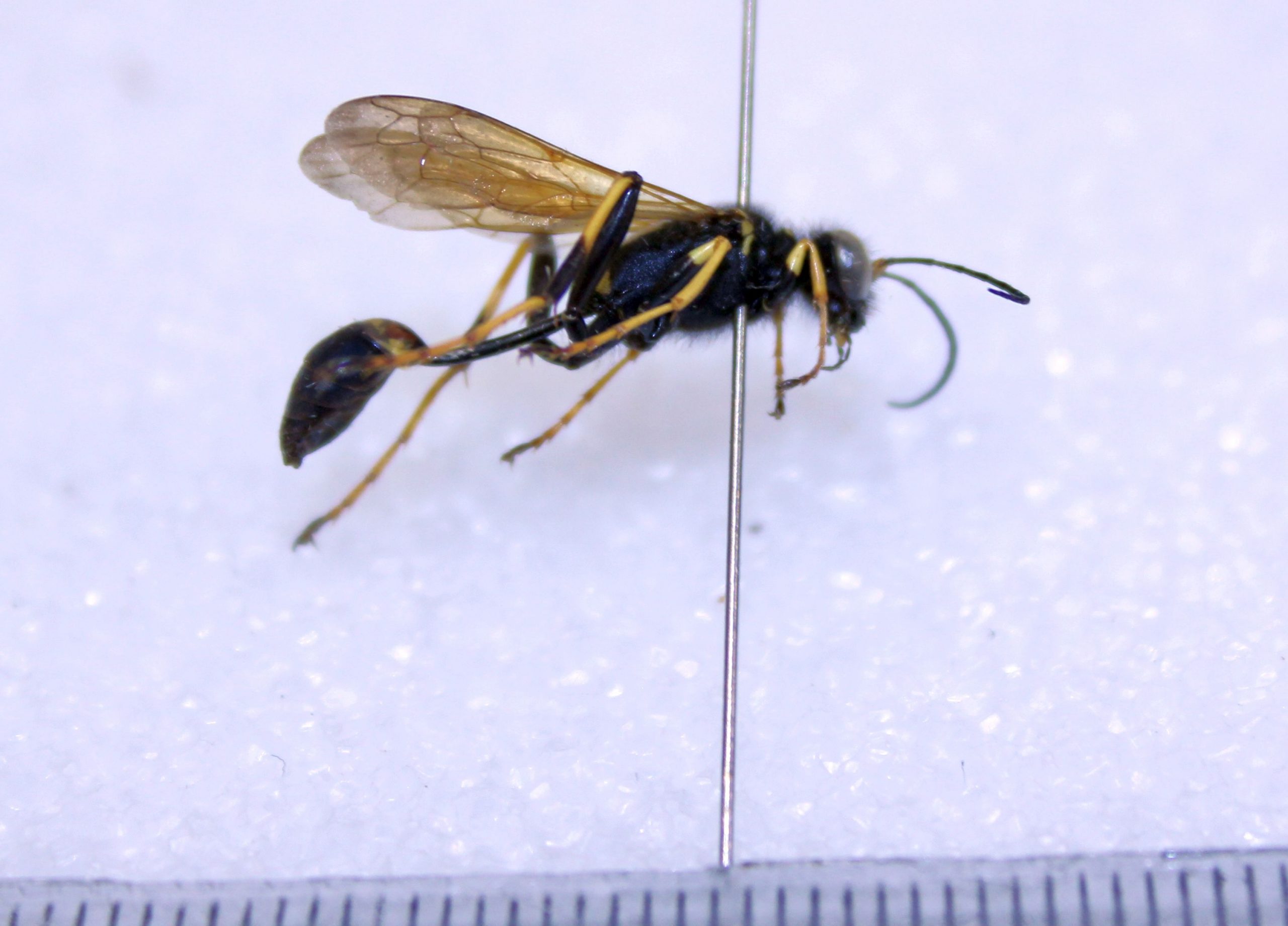


Feedback/Errata